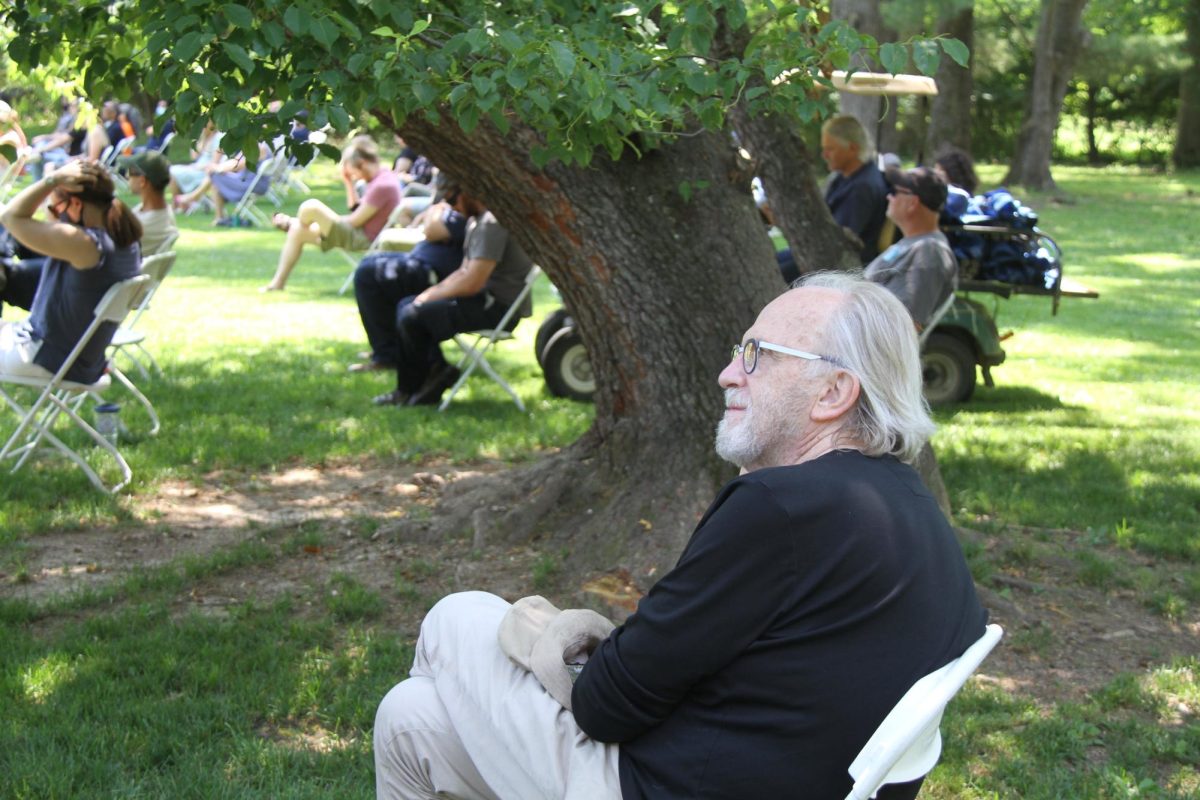PDS Community Reacts to the The Weeknd’s Super Bowl LV Halftime Show
March 2, 2021
Featuring a hallway of mirrors, a choir of robots, and an entourage of bandaged figures, Canadian singer The Weeknd quite literally turned Tampa’s Raymond James Stadium into a spectacle of “Blinding Lights” at the Super Bowl LV Halftime Show.
There is no doubt that the singer delivered a stunning performance despite the harsh happenings of the past year. Viewers of the Super Bowl were able to enjoy an exciting performance, but not all football fans felt that this year’s Halftime Show lived up to ones in the past. As Upper School English Department Chair Dr. Latham put it, “Given the circumstances of [The Weeknd’s] performance (i.e. COVID-19), and the fact he was essentially a one-man show, I think he did a great job. Compared to other years, however, not even close! J Lo (2020), for example, will go down as one of the all-time greatest….and then, of course, there is Bruce Springsteen in 2014, and even Paul McCartney in 2005—two more of my favorites.” Dr. Latham’s thoughts are emblematic of a larger sentiment that many viewers of this year’s Super Bowl shared—that The Weeknd’s performance only appealed to a small section of people in the wide and diverse fan base of football.
This smaller-scale appeal is largely due to the fact that The Weeknd used the Super Bowl Halftime Show to advance the storyline behind his latest album, After Hours, something that only avid listeners would be familiar with. “The Weeknd has been my all-time favorite artist ever since he dropped the album Trilogy in 2012, so I have grown to have a strong appreciation for his work,” noted Junior Idaliza Perez Jimenez, who happens to be what some might call a “The Weeknd expert.” Jimenez added, “Because of this, I was able to fully enjoy The Weeknd’s halftime performance… Also, not all of the Super Bowl viewers are Weeknd fans, so it was hard for them to grasp the bold and powerful message behind his entire performance.” The message that Perez Jimenez references is one that has been in the works for over a year now, and it serves as the driving force behind the artist’s After Hours lore.
The story all started with the release of the “Heartless” music video; this was the first instance where the artist was seen donning his iconic red suit, a distinguishing feature of the persona he created for the story. In the music video, The Weeknd’s character could be seen speeding around the Las Vegas strip, enjoying all of the success he achieved in his career. In the subsequent “Blinding Lights” music video, however, the character was seen getting beaten up, which put a quick stop to all of his enjoyment in the previous visual. The beatings and the blood in that video serve to represent all of the challenges and emotional trauma that The Weeknd has gone through (and is still facing) on his journey to stardom, which shows that the singer was not as prepared as he thought he would be in handling fame and success in Hollywood.
The rest of the story can be tracked through the numerous music videos that The Weeknd has released, along with events the singer has participated in, such as music awards ceremonies. Since the initial music video, the artist has appeared to be getting more bloodied and bandaged, to the point where his entire face was covered up by bandages, like at the 2020 AMAs. However, the story took a turn in the recent “Save Your Tears” music video—the singer had finally taken off the bandages, and what fans saw underneath them was quite surprising, to say the least. The artist seemed to have undergone a sort of plastic surgery, as his unbandaged face took on the likeliness of what some might call “Handsome Squidward.” Although this look did not carry into the Super Bowl Halftime Show, it is still thematically significant to The Weeknd’s story; it signifies that his character has “given in” to all of the beatings Hollywood has thrown at him and has ultimately conformed to what mainstream media wants him to be.
The Weeknd’s story is a testament to all of the aspiring or even successful artists who do not fall into the trap of selling out to Hollywood. “I think the most important part of this is the fact that [the character] essentially ‘bought’ his way into fame by doing plastic surgery. The Weeknd is calling out the fact that most celebrities cheat their way to the top while others, who are hardworking and stay true to their art, get constantly screwed over because they refuse to play the dirty game,” explained Perez Jimenez. This is the message that the singer attempted to carry out at Super Bowl LV—with the Halftime Show being the culmination of his narrative, The Weeknd wanted to use a platform as big as the Super Bowl to deliver the moral of his story. While not all Super Bowl watchers were familiar enough with his After Hours story to get the idea behind his Halftime Show performance, there is no denying that all of the build-up and lore is one of The Weekend’s most intricate and powerful works.





